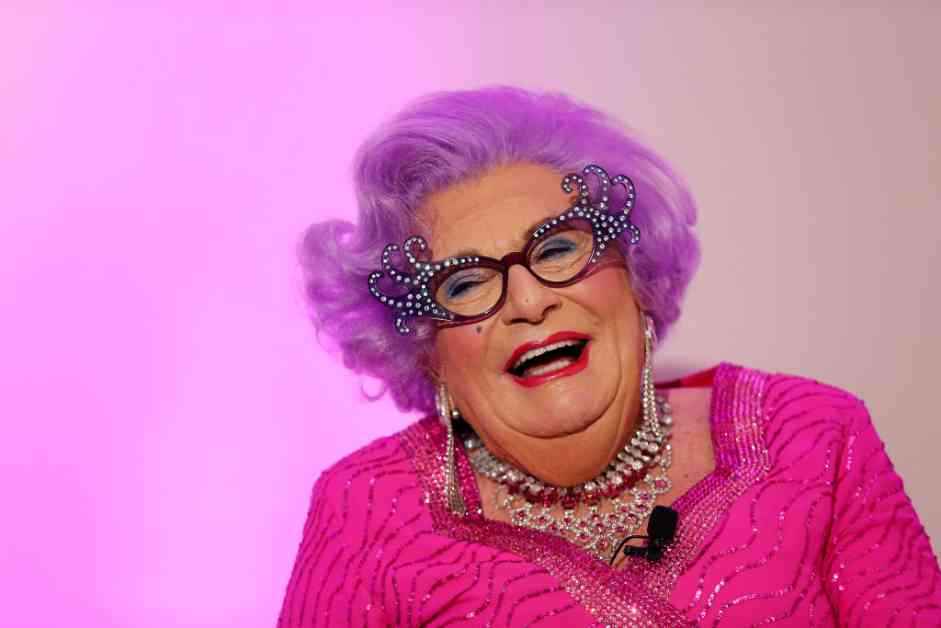Australia’s Sudden Removal of Venice Biennale Artist Sparks Controversy
Australia recently caused uproar in the art world when it abruptly canceled its 2026 Venice Biennale artist, Khaled Sabsabi, following backlash related to his previous artwork featuring a top Hezbollah leader. This decision led to the resignation of Mikala Tai, the head of the pavilion’s organizer, Creative Australia. Tai, who serves as the director of visual arts at Creative Australia, expressed her support for the artist and his curator, Michael Dagostino, by tendering her resignation to Creative Australia’s chief executive, Adrien Collette. Former Venice Biennale commissioner Simon Mordant also stepped down as the international ambassador for the 2026 event, emphasizing his solidarity with Khaled Sabsabi and suggesting that the Australian pavilion remain empty in support of the artist. The controversy surrounding the removal of Sabsabi has sparked further resignations within Creative Australia, with some staff members walking out in protest.
The decision to drop Sabsabi from the Venice exhibition was rooted in the desire to avoid a prolonged and divisive debate about the selection outcome for 2026, as this was seen as a risk to public support for Australia’s artistic community and could potentially undermine the goal of using art and creativity to bring Australians together. Despite these intentions, the fallout from this decision has put the organization’s goal in jeopardy.
Trans Erasure at Stonewall Monument Sparks Outrage
In another recent development, the National Park Service made headlines by removing references to transgender individuals from the official website of the Stonewall National Monument in Greenwich Village. This erasure included omitting the “T” and “Q+” from references to the L.G.B.T.Q.+ community, which was met with criticism and backlash from the LGBTQ+ community. The act of censorship was seen as an affront to the entire LGBTQ+ community, particularly considering the historical significance of the Stonewall Inn as a monument to the gay rights movement.
The removal of references to transgender individuals and the broader LGBTQ+ community was deemed factually inaccurate and insensitive by Dr. Carla Smith, the chief executive of the L.G.B.T. Community Center. The erasure of these identities was a step backward in recognizing the diverse community that played a pivotal role in the fight for LGBTQ+ rights.
Concerns Over Artist Rights and Representation in Legal Battles
Kith, an upscale streetwear brand, is currently embroiled in a legal battle in New York’s Supreme Court over allegations that it used the likeness of a Black artist without his consent as part of a Black History Month clothing collection. Artist Darryl McPherson has accused Kith of commercially profiting from his likeness without authorization, which has led to legal proceedings between the artist and the brand. The case revolves around a painting featuring McPherson’s likeness, which was licensed by Kith from the artist Samuel Olayombo. Allegations of unauthorized use of the artist’s likeness have raised questions about artist rights, consent, and representation in commercial settings.
President Emmanuel Macron of France has also taken legal action in response to an artwork depicting him holding his decapitated head in Guadeloupe. The controversial image, displayed at an art center, led to police questioning the exhibit’s organizer and raised concerns about freedom of expression and artistic representation.
The Textile Museum of Canada faces financial troubles due to the impact of Covid and declining attendance, leading to a temporary closure. Plans to reopen in time for the museum’s 50th anniversary are in place, as the institution navigates challenges related to the pandemic.
The late Barry Humphries, also known as Dame Edna, recently had his personal collection auctioned at Christie’s for a substantial sum. The collection, which included iconic items associated with the beloved character Dame Edna, garnered significant interest and surpassed initial estimates. The auction featured a range of items, including Dame Edna’s signature glasses, which fetched a notable price.
The Art of Love: Exploring Art’s Unique Ability to Express Love
In the spirit of Valentine’s Day, several art publications have delved into the theme of love and its expression through art. From Frida Kahlo to Felix Gonzalez Torres, artists have explored love’s complexities and nuances in ways that written and spoken language often struggle to capture. The Guardian’s Katy Hessel reflects on how art can do justice to the profound emotion of love, drawing on examples from art history to illustrate her point. Cultured Magazine highlights photographer Del LaGrace Volcano’s series “Queer Dyke Cruising,” showcasing playful and potent images that capture moments of love and intimacy. Lastly, Artnet News features 15th-century love letters on display at the British Library, offering a glimpse into the romantic expressions of the past.
In conclusion, the recent developments in the art world underscore the complexities of artistic expression, representation, and the ongoing pursuit of creative freedom and social justice. These stories serve as a reminder of the power of art to provoke thought, spark conversations, and challenge societal norms. As we navigate these issues, the importance of supporting artists, preserving diversity, and fostering inclusivity remains paramount.












